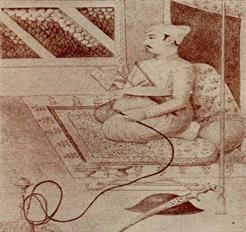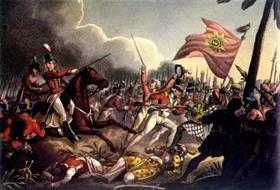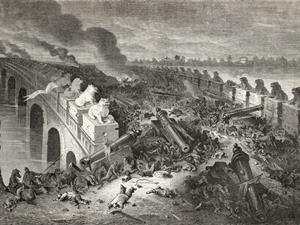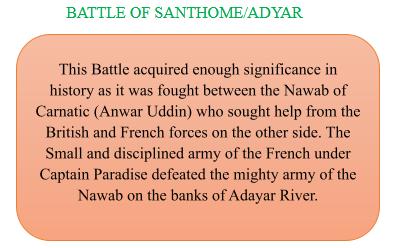
PUMPA - SMART LEARNING
எங்கள் ஆசிரியர்களுடன் 1-ஆன்-1 ஆலோசனை நேரத்தைப் பெறுங்கள். டாப்பர் ஆவதற்கு நாங்கள் பயிற்சி அளிப்போம்
Book Free DemoThe British - Quest for Territory
Mir Qasim – The Bihar Ruler
- He was an able and courageous ruler of Bihar, who shifted his capital from Murshidabad to Munger for his administrative convenience.

Mir Qasim
- He considered himself an independent ruler, which angered the British, who want him under their suzerainty. On the other hand, Mir Qasim was simmering with the British as they had started misusing the Dastaks (Royal passes issued for transportation of Goods).
- These differences led to small scale conflicts between the British and Mir Qasim in 1763\ , where the British emerged victorious in various places like Katwa, Murshidabad and Giria.
- Mir Qasim fled the Battle scene and took asylum in Awadh.
Building a Confederacy
The Buxar Battle (1764)


- This Battle proved to be highly effective in consolidating the British Empire in India as the confederate forces of three kings were convincingly defeated by the British forces under Munro on the banks of the river Ganga in 1764.

Battle of Buxar
- This victory of the British gained them ultimate control over Bengal. This battle ended with the Treaty of Allahabad, by which the Mughal emperor surrendered his rights over Bengal and disbanded his army.
- The British gained the Diwani rights (rights for revenue collection) post the victory. The company established a dual system of governance by appointing deputies to the provinces after the Battle of Buxar.
The British, French Rivalry and the Carnatic wars
- The fight for regional and international supremacy among the European powers spanned across borders, which witnessed death and destruction worldwide and the Indian lands being no exception.
- India's territorial and trade rights were the reason for the tussle between the British and French forces that led to the three Carnatic Wars.
CARNATIC: This is the region of southern peninsular India, comprising the area between the Eastern Ghats and the Coromandel coast.
The First War of Carnatic: (1746 – 1748)

Battle of Adayar

Treaty of Aix-la-Chapelle (1748):